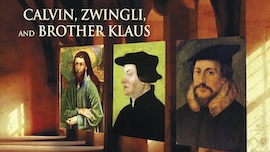Origin of the Gueux (Beggars)
WHEN THE NETHERLANDS (including the ancestors of modern Belgians, Flemish, and Dutch) came under the rule of Emperor Charles V, he determined to stop the spread of the Reformation there by strong measures. And when control of the area passed to King Philip II of Spain, he imposed new and more tyrannical orders. The Inquisition burned hundreds of Protestants, while harsh edicts crushed trade and drained the wealth of the nobles and merchants. Reduced to poverty, they chafed at their loss of wealth and liberty.
In November 1565 the Prince of Parma, a high-ranking Catholic noble, married in Brussels. That same day about twenty Flemish nobles attended a secret church service at which Franciscus Junius, a bold Huguenot (French Protestant), preached. They came away determined to form a league against the “barbarous and violent Inquisition.” During the days of celebration that followed the Prince’s wedding, they enlisted like-minded noblemen.
In the following weeks, the conspirators drew up a covenant demanding a retraction of the harsh edicts and an end to the Inquisition in the Netherlands. They also vowed to defend one another, saying, “We likewise promise and swear mutually to defend one another, in all places, and on all occasions, against every attack that shall be made, or prosecution that shall be raised, against any individual among us on account of his concern in this Confederacy.” Under cover of banquets held throughout the land, they obtained the signatures of two-thousand or more nobles.
Their covenant declared that the Inquisition was “not only contrary to all human and divine laws, but exceeds in cruelty the most barbarous institutions of the most savage tyrants in the heathen world.” One of the first to sign it was Count Brederode, a descendant of the former kings of Holland. Perhaps he hoped to restore his throne.
Brederode led two hundred knights and nobles into Brussels on 3 April 1566. They were soon joined by a hundred more. In a meeting the next day, they drew up a petition to present to Margaret, Duchess of Parma, Philip’s regent in the Netherlands.
On this day, 5 April 1566, between three and four hundred of these covenant-signers rode peaceably to present their petition to Margaret. They declared they had never failed in their loyalty to King Philip and nothing now was further from their hearts. However, they would risk his displeasure, they said, rather than allow him to remain in ignorance of the evils with which their country was now menaced by the introduction of the Inquisition and the enforcement of the edicts. They pleaded that she send an emissary to Philip describing the true state of the nation and that meanwhile the Inquisition and edicts be put on hold.
Margaret told them that she could neither suspend the Inquisition nor the edicts. However, she would reduce some of the Inquisition’s executions from burning to beheading. During Margaret’s discussions with her advisors, one advisor, Count Berlaymont, contemptuously described the petitioners as Gueux—beggars. When Brederode and his associates heard this, they proudly took the name to themselves and even dressed as beggars and made medals depicting beggars.
As it turned out, Philip was inflexible. Forty years of cruel war followed and the warning of the beggars proved only too accurate. By the time of his death, Philip had lost his grip on the Netherlands. The Protestant faith became dominant in the Dutch-speaking parts of the land, although in Belgium Roman Catholicism remained the faith of the people.
—Dan Graves
----- ----- -----
For more on the Calvinist path of Christianity that dominated the Netherlands, see Christian History #120 Calvin, Councils, and Confessions and the DVDs Zwingli And Calvin and Calvin, Zwingli, and Br. Klaus: Shapers of the Faith
Calvin, Zwingli and Br Klaus can be streamed at Vision Video.






